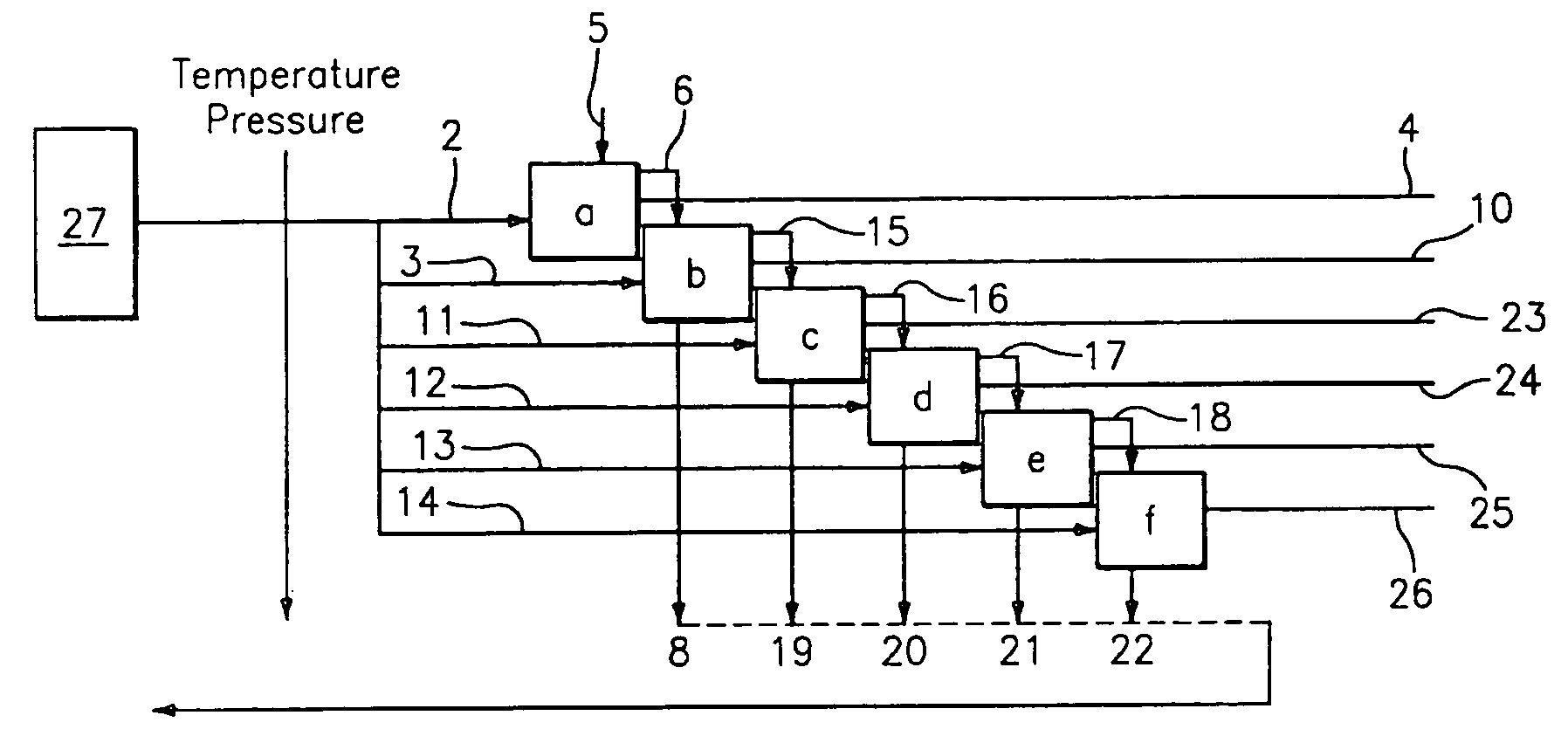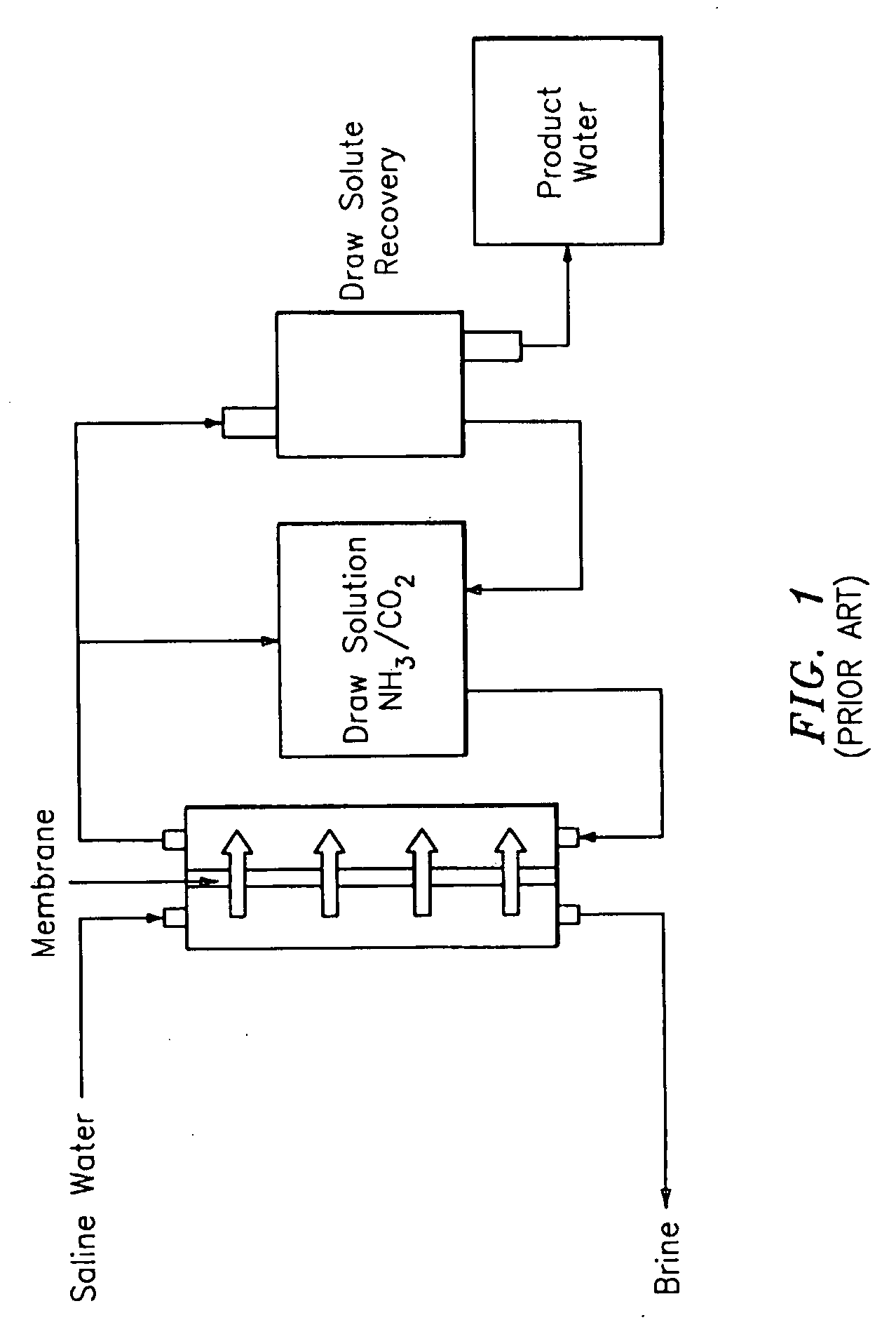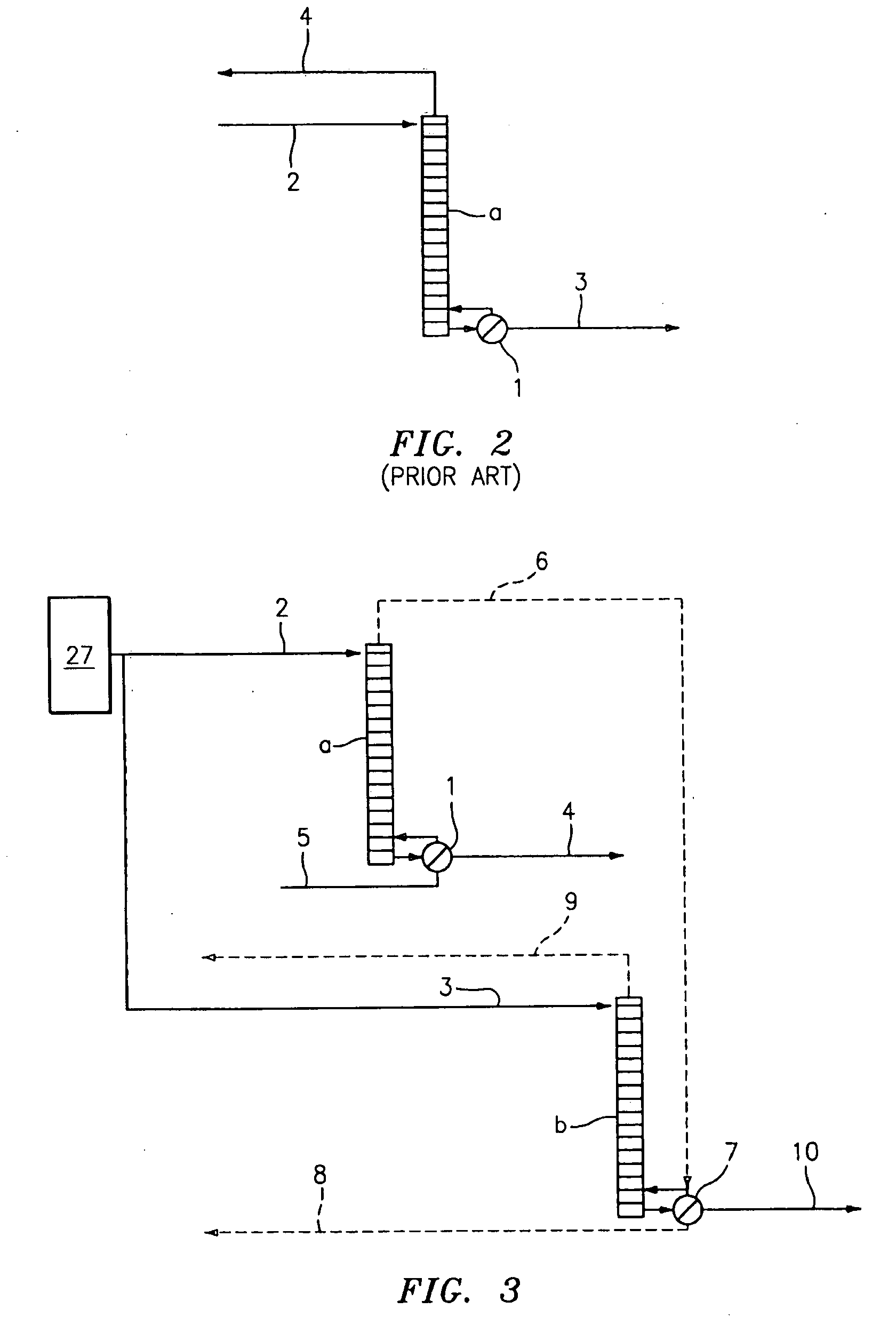Multi-Stage Column Distillation (MSCD) Method for Osmotic Solute Recovery
a column distillation and osmotic solute technology, applied in the field of solvent separation, can solve the problems of increasing the cost of ro, exacerbated already significant tensions, and unable to overcome challenges
- Summary
- Abstract
- Description
- Claims
- Application Information
AI Technical Summary
Benefits of technology
Problems solved by technology
Method used
Image
Examples
Embodiment Construction
[0048]The inventors have discovered that there are benefits of the use of multiple distillation columns for the separation / recovery of draw solution solutes and product solvent from the draw solution especially when higher temperature heat sources are available at costs which favor their use, or a primary design criterion is maximum water output for a fixed quantity of heat.
[0049]The configuration of the distillation columns in the present invention follows a principle similar to that used in multi stage flash (MSF) and multi effect distillation (MED) thermal desalination processes; processes which are well understood by one skilled in the art. In the MSF and MED processes, both energy and material streams move in series through stages of decreasing pressure, these stages being “flash” or evaporation chambers of various designs. In MSF / MED processes, heat is introduced to a “top” stage of a single distillation column to vaporize a portion of the feedwater and the vapor thus produced...
PUM
| Property | Measurement | Unit |
|---|---|---|
| Temperature | aaaaa | aaaaa |
| Temperature | aaaaa | aaaaa |
| Temperature | aaaaa | aaaaa |
Abstract
Description
Claims
Application Information
 Login to View More
Login to View More - R&D
- Intellectual Property
- Life Sciences
- Materials
- Tech Scout
- Unparalleled Data Quality
- Higher Quality Content
- 60% Fewer Hallucinations
Browse by: Latest US Patents, China's latest patents, Technical Efficacy Thesaurus, Application Domain, Technology Topic, Popular Technical Reports.
© 2025 PatSnap. All rights reserved.Legal|Privacy policy|Modern Slavery Act Transparency Statement|Sitemap|About US| Contact US: help@patsnap.com



